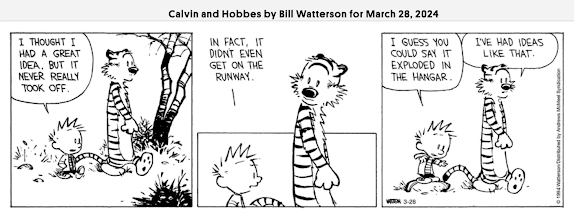In the search of Product - Market Fit, clarity of communication is essential.

The test of a business man
is not whether he can make money in one or two boom years,
or can make money through the luck of getting into the field first,
but whether in a highly competitive field,
without having any initial advantage over his competitors,
he can outdistance them in a perfect honourable way
and keep the respect of himself and of his community.
Harvey Firestone

Common causes of bad decisions:
1. Not asking, “and then what?”
2. Blindness to large trends (blind spots)
3. Assumptions based on small sample sizes
4. Conforming to expectations/authority/group
5. Wanting the world to work the way we want rather than the way it does.
Happiness and contentment are often spoken about in the context of emotional well-being and life satisfaction, but they differ in their nature, causes, and how they are experienced. Here's a closer examination of their similarities and differences:
Nature and Source:
Intensity and Duration:
Perspective and Attitude:
Emotional Complexity:
Understanding the nuances between happiness and contentment can help individuals tailor their life choices and attitudes towards achieving both transient joys and a lasting sense of satisfaction with their lives.
-----------------------------------------
The above test was generated by ChatGPT 4, however when I asked the AI to direct me to an image that expressed the above, look what DALL-E produced:
The text in generated images can sometimes be unclear or resemble typos and unrecognizable words due to the limitations of image generation technology. It aims to visually represent concepts, but the technology isn't perfect at rendering precise, readable text within images. If the infographic's details were not clear, I can help further explain the differences between happiness and contentment or attempt another approach to convey the information. Let me know how you'd like to proceed!
To summarize, the text is excellent, but DALL-E is definitely not ready for prime time.
And, by the way, I feel continuously content.